
Critical Care and Resuscitation
Scope & Guideline
Elevating patient outcomes through cutting-edge research.
Introduction
Aims and Scopes
- Critical Care Practices:
The journal extensively covers clinical practices in critical care, focusing on the management of critically ill patients in intensive care units (ICUs). This includes studies on various interventions, monitoring techniques, and treatment protocols. - Resuscitation Techniques:
Research on resuscitation methods, including advanced life support and extracorporeal membrane oxygenation (ECMO), is a core area. The journal publishes studies that evaluate the efficacy and safety of these techniques in emergency settings. - Patient Outcomes and Quality of Care:
A significant emphasis is placed on patient outcomes post-ICU admission, including long-term survival, quality of life, and psychosocial aspects of recovery. This area highlights the importance of patient-centered care in critical settings. - Innovative Methodologies:
The journal promotes innovative research methodologies, including randomized controlled trials, observational studies, and systematic reviews, particularly those that introduce novel approaches to critical care challenges. - Multidisciplinary Approaches:
Recognizing the complexity of critical care, the journal encourages a multidisciplinary approach, integrating insights from various fields such as nursing, pharmacology, and psychology to improve patient care in ICUs.
Trending and Emerging
- Technology Integration in Critical Care:
There is an increasing focus on the use of technology, such as artificial intelligence and machine learning, to enhance patient monitoring and decision-making in ICUs. This trend highlights the potential for technology to improve outcomes and streamline care. - Patient-Centered Care and Quality of Life:
Research on the long-term outcomes and quality of life for ICU survivors is becoming more prominent. This shift indicates an increasing recognition of the importance of holistic care that extends beyond immediate medical treatment. - Emerging Infections and Resilience in Critical Care:
The impact of emerging infections, such as COVID-19, has led to a surge in studies addressing critical care strategies for infectious diseases. This theme reflects the need for resilience in critical care systems to manage future pandemics. - Multidisciplinary and Collaborative Research:
There is a growing emphasis on collaborative research that involves multiple disciplines, reinforcing the importance of teamwork in improving patient outcomes in complex critical care scenarios. - Sustainability and Resource Management in ICUs:
Emerging research on environmental sustainability and efficient resource management within intensive care settings is gaining attention. This reflects a broader trend in healthcare towards reducing waste and improving the sustainability of practices.
Declining or Waning
- Traditional Pharmacological Interventions:
Research related to conventional drug therapies, especially those with established efficacy, has waned as new, innovative treatment modalities gain attention. This shift indicates a growing interest in exploring alternative therapies and personalized medicine. - Basic Clinical Practices:
Studies focusing on routine clinical practices that do not significantly alter patient outcomes are less frequently published. This trend suggests a move toward more impactful research that can directly influence critical care protocols. - Epidemiological Studies without Interventional Focus:
While epidemiological studies remain relevant, those that do not link findings to specific interventions or improvements in practice are experiencing a decline. This reflects a preference for research that can lead to actionable changes in patient care.
Similar Journals

Journal of EndoVascular Resuscitation and Trauma Management
Pioneering Research in Trauma and ResuscitationJournal of EndoVascular Resuscitation and Trauma Management, published by OREBRO UNIV HOSPITAL in Sweden, serves as an essential platform for disseminating innovative research in the critical fields of endovascular resuscitation, trauma management, and emergency medicine. Since its establishment as an Open Access journal in 2017, it has aimed to bridge knowledge gaps in critical care and surgical practices, providing a space for authors to share their pioneering work with a global audience. With its indexed ranking in the Q4 category for Critical Care and Intensive Care Medicine, Emergency Medicine, and Surgery, this journal offers a unique opportunity for researchers, professionals, and students to engage with contemporary issues and advancements in these vital areas of healthcare. By keeping its archive accessible and promoting collaboration among the scientific community, the Journal of EndoVascular Resuscitation and Trauma Management continues to contribute significantly to the evolving landscape of medical research and practices.

Anaesthesiologie
Leading the Way in Anesthesia: Research That MattersAnaesthesiologie is a pivotal journal dedicated to advancing the field of anesthesiology and pain medicine. Published by Springer Heidelberg, this journal serves as a vital platform for disseminating high-quality research and clinical practice advancements within the domain. With an ISSN of 2731-6858 and an E-ISSN of 2731-6866, it operates out of Germany and achieves a respectable impact factor, placing it in the Q3 category for the field as of 2023. The Scopus rank reflects its standing among peers, being positioned at #64 out of 136, showcasing a 53rd percentile in anesthesiology and pain medicine. While open access options are currently unavailable, this journal remains committed to enhancing knowledge and practice standards for researchers, professionals, and students alike, particularly through the period spanning from 2022 to 2024. Contributions to Anaesthesiologie are essential for those seeking to stay at the forefront of innovations and challenges in anesthesia practice.
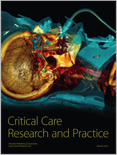
Critical Care Research and Practice
Exploring breakthroughs in intensive care medicine and patient outcomes.Critical Care Research and Practice is a distinguished open-access journal published by HINDAWI LTD that has been at the forefront of disseminating vital research in the fields of critical care and intensive care medicine since its inception in 2010. With an impressive Q2 ranking in its category and positioned in the top 63rd percentile according to Scopus rankings, the journal serves as a critical platform for researchers, practitioners, and students aiming to advance their understanding and improve outcomes in intensive care settings. Based in Egypt, the journal's breadth encompasses diverse aspects of critical care, including innovations in treatment protocols, evidence-based practices, and the latest advancements in patient care strategies. Through its commitment to open access, Critical Care Research and Practice ensures that high-quality research is readily available to a global audience, fostering collaboration and knowledge sharing across the medical community.

Minerva Anestesiologica
Pioneering Research for a Pain-Free FutureMinerva Anestesiologica, published by EDIZIONI MINERVA MEDICA, is a premier journal in the field of anesthesiology and pain medicine, with a commendable impact factor and classified in the second quartile (Q2) for 2023. Since its inception in 1953, this esteemed journal has served as a vital resource for researchers, clinicians, and students, presenting high-quality peer-reviewed articles that address a wide range of topics within the domain of anesthesiology. With its current ranking of #42 out of 136 in the Scopus database, Minerva Anestesiologica is recognized for its contribution to advancing clinical practices and innovations in pain management, furthering the knowledge base and professional development in anesthesiology. Although the journal is not open access, it provides comprehensive accessibility options for institutions and individual practitioners, ensuring that critical research is disseminated widely. As it continues to thrive, Minerva Anestesiologica remains a cornerstone of knowledge and a platform for transformative dialogue in the evolving landscape of anesthetic care.
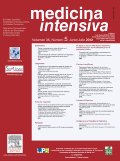
Medicina Intensiva
Advancing Critical Care Knowledge for Tomorrow's ChallengesMedicina Intensiva is a distinguished journal published by Elsevier España SLU, specializing in the critical care and intensive medicine fields. Since its inception in 1988, this peer-reviewed journal has established itself as a vital resource for healthcare professionals and researchers dedicated to advancing the knowledge and treatment of critically ill patients. With an impact factor ranked in the Q2 category for Critical Care and Intensive Care Medicine, the journal sits at the 50th percentile among its peers, reflecting its reputable standing in the academic community. The scope of the journal encompasses a wide array of topics, from clinical practices to innovative research findings, contributing significantly to the enhancement of patient care in intensive settings. Although the journal does not currently offer Open Access options, its valuable content is accessible to subscribers and institutions, reinforcing its role as an important conduit for disseminating high-quality research. As we continue into 2024, *Medicina Intensiva* remains committed to supporting the medical community through insightful articles and timely reviews that shape the future of intensive care.

Emergencias
Fostering Global Collaboration in Urgent Care SolutionsEmergencias is a prestigious journal in the field of Emergency Medicine, published by the Sociedad Española de Medicina de Urgencias y Emergencias (SEMES). This journal has established itself as a vital platform for sharing cutting-edge research and practical insights, ranking in the top 20 of emergency medicine journals according to Scopus, with a commendable 82nd percentile performance. Since its inception, it has maintained a commitment to advancing knowledge and practice in emergency care, making contributions essential for both researchers and practitioners. The journal features diverse articles covering clinical guidelines, innovative techniques, and case studies, reflective of its importance in guiding timely medical interventions. As an open access publication, it encourages widespread dissemination of knowledge, fostering collaboration and understanding across the global emergency medicine community. Emergencias continues to publish high-quality research until 2024, making significant strides in enhancing emergency healthcare practices in Spain and beyond.
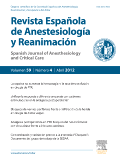
Revista Espanola de Anestesiologia y Reanimacion
Driving excellence in patient care through rigorous scholarship.Revista Española de Anestesiología y Reanimación, an esteemed journal published by Elsevier, serves as a pivotal resource at the intersection of anesthesiology, critical care, and pain medicine. Established in 1963, this journal has continually contributed to the evolving dialogue in these fields, showcasing innovative research that informs practice and enhances patient care. With a current Q3 ranking in both anesthesiology and critical care disciplines as of 2023, it represents a vital platform for clinicians and researchers alike, who are committed to advancing knowledge and improving clinical outcomes. Though not an open-access publication, Revista Española de Anestesiología y Reanimación ensures rigorous peer-review processes and offers insights from leading experts around the globe, making it an invaluable reference for professionals seeking to stay abreast of the latest advancements and trends. Its bibliometric indicators and Scopus rankings affirm its relevance and influence within the academic community, solidifying its role as a cornerstone of anesthesiology and intensive care research.
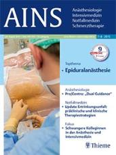
ANASTHESIOLOGIE INTENSIVMEDIZIN NOTFALLMEDIZIN SCHMERZTHERAPIE
Advancing the Frontiers of Anesthesia and Critical CareANASTHESIOLOGIE INTENSIVMEDIZIN NOTFALLMEDIZIN SCHMERZTHERAPIE, published by GEORG THIEME VERLAG KG in Germany, serves as an essential resource for professionals in the fields of anesthesiology, intensive care, emergency medicine, and pain management. This esteemed journal, with the ISSN 0939-2661 and E-ISSN 1439-1074, has been a critical platform for scholarly exchange since 1980, advancing knowledge and practice in these vital areas of medicine. Although currently positioned in the Q4 category across several medical disciplines, its commitment to disseminating innovative research and case studies ensures that it remains relevant in the ever-evolving landscape of medical science. Although the journal does not offer open access, it provides comprehensive insights and findings that cater directly to the interests of researchers, clinicians, and students eager to enhance their expertise and stay abreast of contemporary practices. The journal continues to foster dialogue and development within its community, making a significant contribution to the understanding and improvement of patient care and clinical outcomes.

Medizinische Klinik-Intensivmedizin und Notfallmedizin
Advancing Critical Care Knowledge for Better Patient OutcomesMedizinische Klinik-Intensivmedizin und Notfallmedizin, published by SPRINGER HEIDELBERG, is a distinguished journal that serves the fields of critical care, intensive care medicine, emergency medicine, and internal medicine. With an ISSN of 2193-6218 and an E-ISSN of 2193-6226, the journal has established its presence in Germany and has garnered respect within the international medical community. It has demonstrated noteworthy impact, classified in the Q2 and Q3 quartiles across various categories in 2023, including Critical Care and Intensive Care Medicine, Emergency Medicine, and Emergency Nursing. This journal not only showcases cutting-edge research but also offers a platform for sharing innovative practices and clinical developments, thereby facilitating improved patient care and outcomes. As an accessible resource for researchers, professionals, and students dedicated to advancing their knowledge in acute and critical care settings, the journal represents an essential addition to the scholarly landscape in its field.
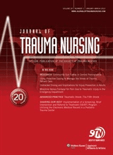
Journal of Trauma Nursing
Shaping the Future of Emergency Nursing Through KnowledgeJournal of Trauma Nursing, published by LIPPINCOTT WILLIAMS & WILKINS, is a pivotal resource in the fields of trauma, critical care, and emergency nursing. With an ISSN of 1078-7496 and an E-ISSN of 1932-3883, this journal has been at the forefront of disseminating cutting-edge research and innovative practices since its inception in 1995, continuing through 2024. Positioned within the Q3 quartile of the Advanced and Specialized Nursing, Critical Care Nursing, and Emergency Nursing categories, it provides valuable insights into trauma care that enhance clinical practice and patient outcomes. The journal is recognized for its commitment to advancing knowledge and improving the quality of nursing care, making it an essential publication for researchers, practitioners, and students who are dedicated to the fields of trauma and emergency nursing. While currently not available as Open Access, it remains a reputable source of peer-reviewed content aimed at fostering a comprehensive understanding of trauma nursing. Located in the United States at TWO COMMERCE SQ, 2001 MARKET ST, PHILADELPHIA, PA 19103, the Journal of Trauma Nursing continues to impact the profession significantly.